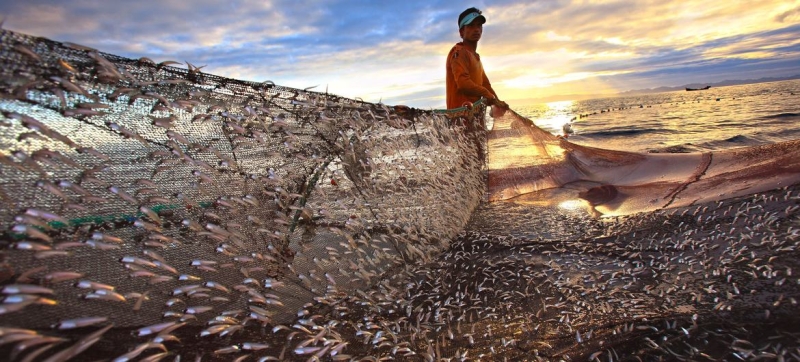
In 2022, global fisheries and aquaculture production reached a new high of 223.2 million tonnes. FAO: World’s fish stocks would plummet under high-emissions scenario Climate and Environment
Updated forecasts from scientists point to potential climate risks for usable fish in almost all regions of the world’s oceans. This is according to a report released on Wednesday by the Food and Agriculture Organization of the United Nations (FAO).
The report, Climate Change Risks to Marine Ecosystems and Fisheries, includes projections out to 2100. According to the data presented in it, by the middle of this century, usable fish biomass will decrease by more than 10 percent. In a scenario of continued high emissions, which would result in global warming of three to four degrees Celsius, the reduction would reach 30 percent in about 48 countries. In contrast, under a low-emissions scenario that projects global warming of 1.5 to 2 degrees Celsius, fish stocks would stabilize in 178 countries by the end of the century.
« Emission reductions could significantly reduce fish stock losses by the end of the century for almost all countries and territories compared with a high scenario. This highlights the need for action to mitigate the impacts of climate change on fisheries and aquatic products,” said Manuel Barange, FAO Assistant Director-General and Director of the Fisheries and Aquaculture Division.
Loss comparison, projected in both scenarios by the end of the century, shows that reducing emissions has noticeable benefits for almost all countries and territories. These include small island developing states, where people rely heavily on fisheries for food and income, and where environmental and socio-economic risks associated with climate change are greatest.
The FAO report comes on the heels of the latest edition of the State of World Fisheries and Aquaculture report, which shows that global fisheries and aquaculture production reached a new high of 223.2 million tonnes in 2022.
